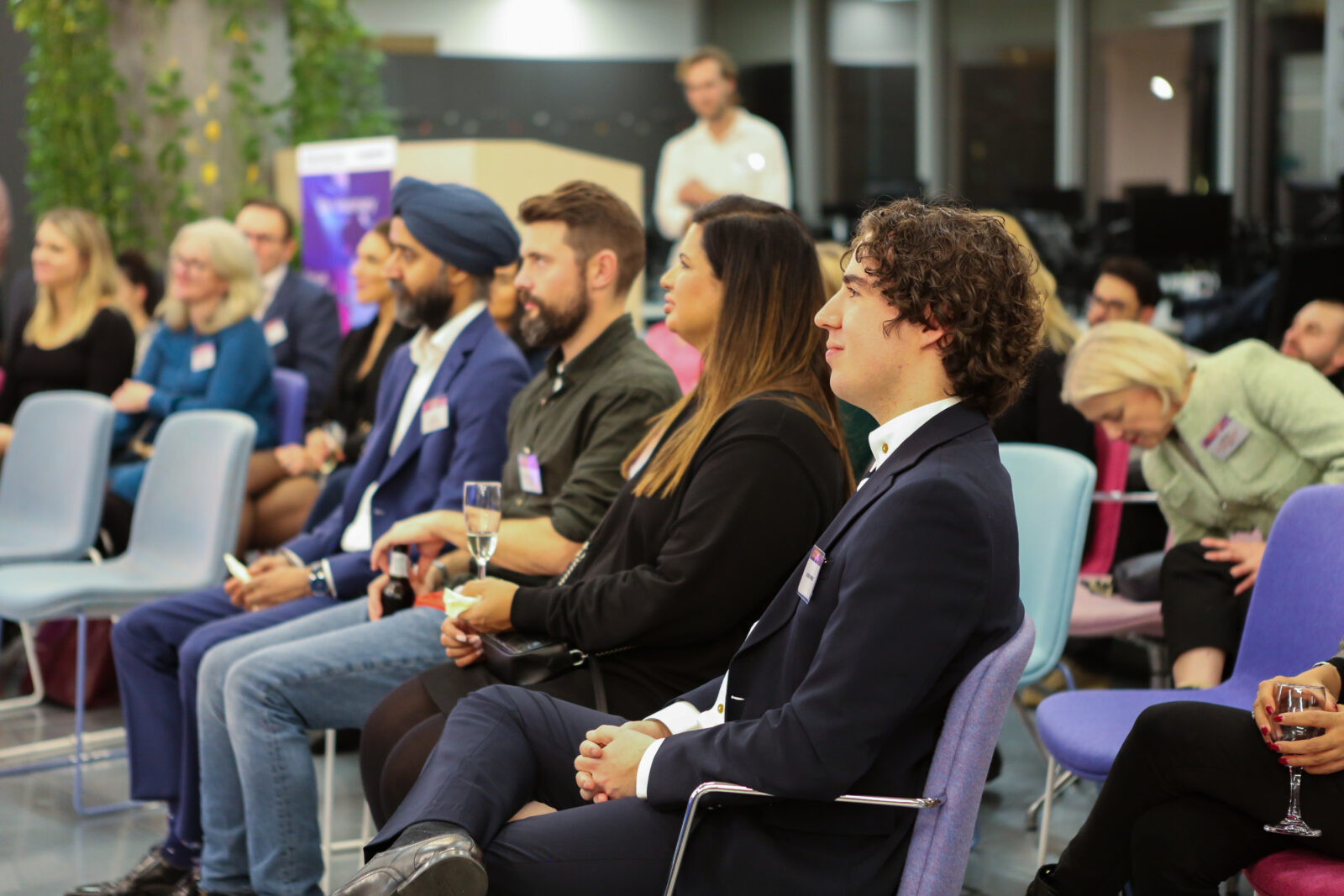As Brands2Life expands our health expertise with a new pharma tech offer, we hosted our first PharmaConnect event, to showcase some of our latest work and thinking redefining health communications.
We started with a bang by exploring how Virtual Reality (VR), Artificial Intelligence (AI), and digital experiences are transforming the ways health brands can engage with audiences in the fast-evolving digital landscape and to make the value of tech feel real and understood.
Technology is already transforming the healthcare industry. Now, it’s time to let creative tech drive health communication efforts, too. The integration of technology and communication enables a unique experience for patients and caregivers with the main ambition to improve their care journey and overall outcomes.
By using simulations, immersive environments, and interactive tools, we can bridge the gap between treatment protocols and patient understanding. For instance, VR simulations can prepare families for the realities of treatment, giving them a sense of control and readiness during stressful times and AI can support a highly personalised experience with managing daily care.
“Today, communication is more than just delivering information; it’s about creating meaningful experiences that enrich lives every day. In a tech-savvy world, we have opportunities to go beyond traditional approaches to deliver impactful, engaging, and patient-centred experiences.” Jessica Thorelius, CEO at DVA Creative Technology Studio (Brands2Life sister company and part of the Paritee group)
AI is already reshaping video content creation. AI-driven solutions can not only streamline video production and remove some of the logistical challenges of traditional filming but allow for emotive storytelling that resonates with diverse audiences.
This fictitious AI-generated short video, created in a short space of time especially for the event, shows a moment in time in a patients’ journey. Our goal was to demonstrate that AI can be a great tool to efficiently and effectively enable emotional storytelling, without compromising the authenticity of the story being told.
“AI can help us create authentic, data-driven content without logistical hurdles. In the same way you might have used actors in a traditional video, even though the characters are not real patients or nurses, their stories are based on real testimonials and real emotions.” Ikenna Mokwe, Senior Producer-Director at Brands2Life
Social media has transformed health communication, especially post-COVID-19, as patients seek not just clinical advice but personal, relatable insights into health conditions.
Patient influencers are on the rise and when carefully aligned with a brand’s values, can enhance trust and engagement. Deborah James’ advocacy for cancer checks was a prime example of how authentic, influencer-led storytelling is reshaping public health perceptions and driving tangible action.
“Patient influencers are now some of the most authoritative voices in health conversations, with 85% of consumers more likely to trust a pharmaceutical brand if promoted by a patient influencer. If you are not already working with them as part of your social media strategy, you are likely missing a trick.” Kinda Jackson, MD, Digital & Social at Brands2Life
The environmental impact of the healthcare sector is becoming increasingly pressing – pharma needs to adapt to rising sustainability demands and embrace transparent, purpose-driven communications.
“Pharma’s impact on the world is significant. And yet, when many other industries have been called up to account for their impact on the world – food, automotive, aviation, development, tourism and so many more – pharma has, to some extent, been hiding in plain sight,” Carolyn Irwin, MD, Corporate & Responsible Business at Brands2Life
Leading pharma companies that are proactively communicating on this front strengthen their overall reputation. Beyond ESG reporting, sustainability can be an incredible source of storytelling and creativity; there is a huge advantage to be seized by leaning into sustainable transformation and accompanying change with powerful communications.
If you are interested in any of the topics covered, please get in touch with Isabelle Scali, Head of Pharma. We’d love to hear about and help with your challenges and ideas to support your brand ambition.


